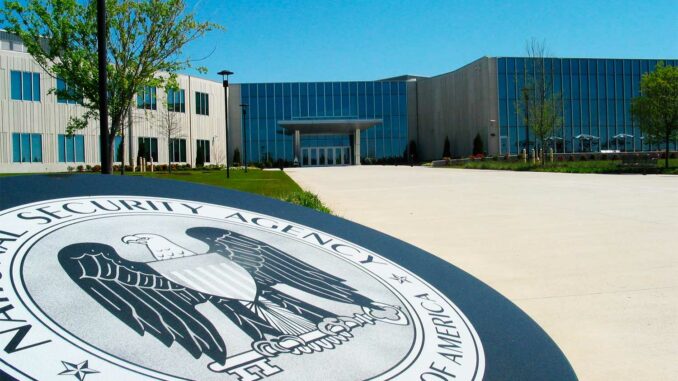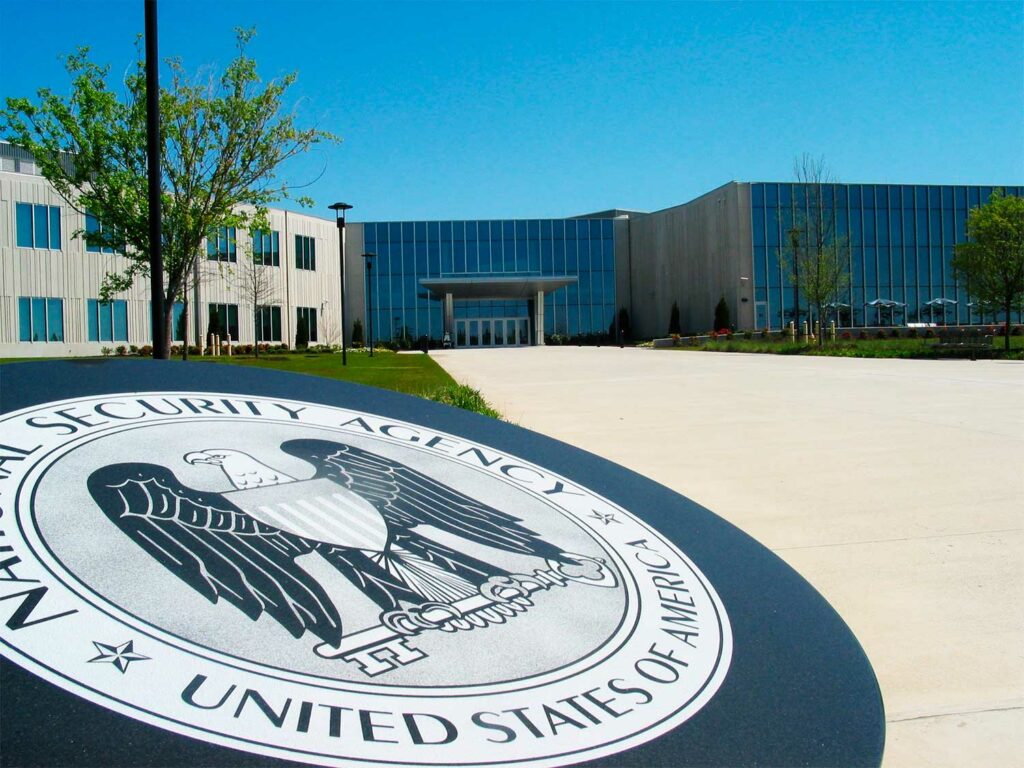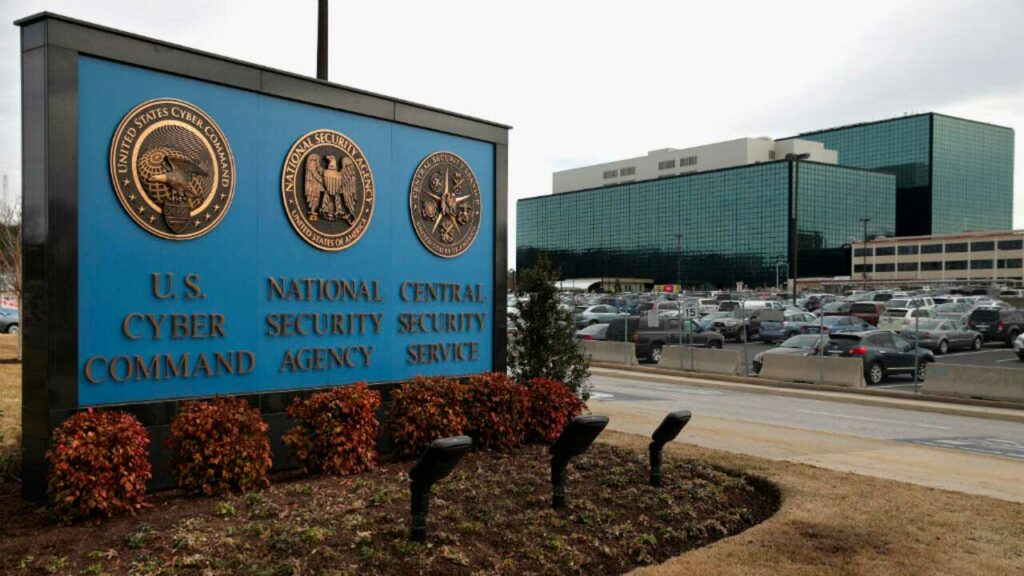
Everything you need to know about the NSA: missions, technologies, surveillance, espionage, controversies, and how the American intelligence agency works.
The National Security Agency (NSA) is one of the main intelligence agencies in the United States, specializing in electronic espionage, cryptanalysis, and cybersecurity. Created in 1952, it plays a crucial role in collecting signals intelligence (SIGINT) and protecting the US government’s information systems.
History of the NSA
The National Security Agency (NSA) was officially created on November 4, 1952 by a classified presidential directive signed by Harry S. Truman. It was born in the context of the Cold War, when the United States wanted to strengthen its ability to intercept and analyze strategic foreign communications. Before its creation, this mission was the responsibility of the Armed Forces Security Agency (AFSA), established in 1949. However, the AFSA was deemed incapable of effectively coordinating the various cryptanalysis services of the armed forces. The NSA was therefore designed as a centralized and secret entity, placed under the authority of the Secretary of Defense, but operating under the direction of the President.
One of the NSA’s first major operations was the SHAMROCK program, which was actually initiated in the late 1940s but expanded under the NSA. This program involved copying the contents of international telegrams entering or leaving the United States. Companies such as Western Union collaborated secretly with the agency. Although this program was extremely controversial, it remained active until 1975.
At the same time, the NSA also contributed to ECHELON, a global signal interception network developed jointly with its Anglo-Saxon allies. This network was part of the UKUSA cooperation agreement, which brings together five countries: the United States, the United Kingdom, Canada, Australia, and New Zealand. These countries form the core of the Five Eyes partnership, sharing the results of global electronic interceptions with each other.
Throughout the Cold War, the NSA saw its staff and budget grow significantly. It established itself as a major player in global technical espionage, evolving from a military function to a strategic intelligence agency operating in times of peace and conflict.

The NSA’s missions
The National Security Agency has two main missions defined by the National Security Council: electromagnetic intelligence gathering (SIGINT, for Signals Intelligence) and protecting sensitive information systems of the federal government (known as INFOSEC).
Intelligence gathering (SIGINT)
The NSA’s primary mission is to intercept, analyze, and exploit foreign electronic communications, whether radio signals, satellite transmissions, submarine cables, or Internet traffic. This data provides strategic information about the military, political, economic, or scientific activities of states or organizations deemed sensitive by the United States.
In practical terms, this includes monitoring phone calls, emails, encrypted messages, and data flows passing through major internet service providers and data centers. The aim is to provide useful information to political and military decision-makers and partner agencies, particularly in the fight against terrorism, nuclear proliferation and industrial espionage.
This collection is massive, global, and carried out largely through partnerships with foreign intelligence services, particularly under the UKUSA treaty. It also involves discreet cooperation with telecommunications companies through programs such as PRISM.
Information system security (INFOSEC)
The NSA’s second mission, less well known but just as crucial, is to secure the communication and information systems of the US government, including those used by the White House, the Pentagon, the State Department, and the CIA. This includes:
- designing advanced encryption systems;
- detecting and neutralizing cyberattacks;
- developing secure communication protocols.
The goal is to ensure that government communications cannot be intercepted by foreign powers or non-state groups.
Interagency coordination
The NSA works closely with other entities such as the CIA, the FBI, US Cyber Command (which it also directs through a dual command structure) and the Department of Homeland Security. This collaboration enables a coordinated approach to intelligence and cybersecurity within the US federal system.
As such, the NSA is both an offensive electronic espionage tool and a defensive shield against cyber threats, at the heart of the geopolitical and technological challenges of the 21st century.
Technologies developed and used
To carry out its surveillance and cybersecurity missions, the NSA has designed and operated a range of advanced technologies, some of which were made public following massive revelations in 2013. These tools, most of which were secret before that date, demonstrate the extent of the agency’s technical capabilities in data analysis, global Internet traffic processing, and communications mapping.
PRISM: data extraction from digital giants
The PRISM program, established in 2007 under the Bush administration and maintained by the Obama administration, allows the NSA to directly access the servers of major US technology companies such as Google, Microsoft, Yahoo, Apple, and Facebook. Through requests approved by the FISA Court (Foreign Intelligence Surveillance Court), the NSA can obtain emails, files stored in the cloud, video chats, search histories, file transfers, and even location data.
PRISM does not analyze all traffic in real time: it operates on a predefined targeting principle, which is legally authorized but not very transparent for the users concerned.
XKeyscore: massive analysis of Internet traffic
XKeyscore is a real-time Internet traffic analysis system. Unlike PRISM, this tool allows analysts to monitor the activities of an identified (or even unknown) user based on various criteria: IP address, keywords, type of file downloaded, language used, etc.
The system records gigabytes of data every day and makes it available for consultation for a limited period (from a few days to several weeks, depending on the servers). The aim is to enable rapid and unstructured exploration of digital communications.
Boundless Informant: global mapping of metadata
Boundless Informant is a statistical visualization system. It allows real-time mapping of the volumes of data collected in each country, without displaying the content. This is essentially metadata: call duration, frequency, geolocation, links between contacts.
In June 2013, Edward Snowden revealed the existence of these programs. These revelations triggered a global diplomatic and legal shockwave. The legality of such practices, although defended by the US authorities as necessary for national security, has been questioned by many experts in data protection, particularly in Europe.
These technologies illustrate the NSA’s ability to process colossal volumes of information. But they also raise the question of the balance between security and privacy, in a context where surveillance often transcends national and legal boundaries.

Key figures at the NSA
The history of the NSA has been shaped by several individuals whose influence has marked the agency’s technical, political, and operational orientations. These individuals have helped structure the institution, develop its technological capabilities, and define its global surveillance strategies.
William Friedman: the intellectual founder
William F. Friedman (1891–1969) is considered one of the founding fathers of modern cryptanalysis in the United States. He did not head the NSA, but his work laid the foundations for what would become the agency’s core mission: the detection, analysis, and deciphering of foreign communications.
Friedman led the Army’s first cryptanalysis programs in the 1930s and 1940s. He developed decoding methods that helped break the Japanese PURPLE code during World War II. His legacy lives on in the analytical and mathematical structure of the NSA, which still relies heavily on the principles he introduced.
Michael Hayden: post-9/11 expansion
Michael V. Hayden headed the NSA between 1999 and 2005. A US Air Force officer, he was appointed during the digital transition and saw his mandate profoundly transformed by the attacks of September 11, 2001.
Under his leadership, the NSA significantly expanded its domestic and foreign surveillance programs in connection with the war on terrorism. It was also during his tenure that the agency strengthened its cooperation with major technology companies.
Keith Alexander: cyber surveillance and the Snowden crisis
Keith B. Alexander took over as head of the NSA in 2005, adding the leadership of US Cyber Command in 2010. He was at the helm during a period of massive technological modernization, marked by the rise of mobile internet and social media.
It was under his authority that systems such as PRISM and XKeyscore were deployed. In 2013, he was confronted with the leak of classified documents by Edward Snowden, revealing to the public the extent of the agency’s surveillance capabilities. This affair would have a lasting impact on the NSA’s image.
These figures left a deep mark, each embodying a key moment in the agency’s technological, geopolitical, and strategic evolution.
Controversies surrounding the NSA
The National Security Agency came under heavy criticism beginning in 2013, when former contractor Edward Snowden leaked thousands of classified documents to the press. These revelations highlighted the extent of the agency’s electronic surveillance practices, often without the knowledge of citizens, allies, and even some US political authorities. Three major controversies crystallized the criticism.
Widespread mass surveillance
The PRISM and XKeyscore programs were particularly criticized for their ability to collect large volumes of data, not only targeted but also derived from massive, indiscriminate storage. Millions of communications—emails, browsing histories, shared files—were analyzed, sometimes without a clear individual warrant. This surveillance extended to US citizens, contrary to the NSA’s original foreign mission.
Defenders of the NSA have justified these practices by the urgency of the fight against terrorism, particularly after the attacks of September 11, 2001. But critics have pointed out that this security rationale should not come at the expense of fundamental rights, particularly the right to privacy.
Spying on foreign leaders
Another high-profile case involved the wiretapping of foreign leaders, notably German Chancellor Angela Merkel, whose personal phone was allegedly tapped for several years. Brazilian, Mexican, and French leaders were also targeted.
These practices caused a crisis of confidence between the United States and its allies, particularly in Europe. Germany demanded official explanations, and the European Commission called into question several data transfer agreements, such as Safe Harbor.
Opaque agreements with companies
Cooperation between the NSA and major US technology companies (Google, Apple, Facebook, Microsoft) sparked a debate about transparency and the passive or active complicity of these companies in surveillance. Although some claimed to have been compelled by secret orders, others were accused of facilitating access to user data.
These controversies have led to a series of legislative reforms in the United States (the USA FREEDOM Act in 2015), but also to growing mobilization of digital freedom advocates worldwide. The NSA, although a strategic player, has since remained at the center of tensions between security concerns and democratic guarantees.

Recruitment to the NSA
Recruitment to the National Security Agency is a strict and selective process designed to identify highly qualified candidates in technical, linguistic, analytical, and legal fields. As an agency within the Department of Defense, the NSA offers a wide range of positions but requires a high level of integrity, discretion, and competence.
Diverse but specialized profiles
The NSA recruits mainly in three broad categories:
- Intelligence analysts: these professionals specialize in rare foreign languages, geopolitics, signal analysis, or metadata exploitation. They interpret intercepted content and contribute to the production of strategic reports. Proficiency in languages such as Chinese, Russian, Farsi, and Arabic is particularly sought after.
- Engineers and IT specialists: these professionals form the technological backbone of the agency. The NSA employs cryptographers, cybersecurity experts, network architects, offensive security analysts (red team) and software developers capable of designing collection and decryption tools. The field of artificial intelligence and automatic language processing is also growing rapidly.
- Administrative and legal staff: lawyers, specialists in security law and FISA procedures, and human resources experts ensure compliance, internal management, and the regulatory framework for operations. These staff members play a key role in maintaining the balance between security and legality.
A rigorous selection process
Each candidate must undergo a strict evaluation process, including a criminal background check, financial analysis, polygraph (lie detector) and in-depth technical interviews. A Top Secret/Sensitive Compartmented Information (TS/SCI) security clearance is required for most positions.
Recruitment is open to US citizens only, with a generally high level of education (bachelor’s or master’s degree) and specialized expertise. The NSA also recruits directly from universities or through advanced internship programs focused on STEM (science, technology, engineering, and mathematics).
Implications for citizens
The activities of the NSA are not limited to diplomatic or military issues: they have a direct impact on the lives of citizens, both in the United States and abroad. The widespread use of digital surveillance, combined with intrusive technologies, raises several key questions.
Privacy under surveillance
The mass collection of metadata, such as call histories, IP addresses, geolocation data, and email correspondence, potentially affects everyone connected to the internet. Even without consulting the content of messages, the ability to analyze relationship networks and browsing habits makes it possible to create detailed profiles. This situation poses a challenge to the principles of personal data protection, particularly in countries such as those in the European Union, where laws such as the GDPR require transparency and consent.
National security as justification
The NSA justifies its practices by the need to prevent attacks and detect hostile activities, whether by terrorist groups or enemy states. It claims that its detection capabilities have foiled several plots. However, the actual effectiveness of this surveillance remains difficult to measure objectively.
Major technological influence
Finally, the NSA is involved in the development of encryption standards (such as AES and SHA) and network security protocols, and even plays a role in global technology standardization. This influence can be seen in the tools we use every day, such as browsers, secure messaging services, VPNs, and more.
The NSA thus operates behind the scenes on essential aspects of digital technology, with consequences that extend far beyond the realm of intelligence.
The NSA remains a central player in global intelligence, combining advanced technological capabilities with national security missions. Its activities raise complex questions about the protection of individual freedoms and the transparency of institutions. Citizen vigilance and appropriate legal frameworks are necessary to ensure a balance between security and respect for fundamental rights.
War Wings Daily is an independant magazine.